Link devaluation: The hidden threat of SpamBrain
Learn why buying links could be a recipe for disaster as Google tightens its grip on spammy SEO tactics.
As I write this, we’re in the first week of the March 2024 core and spam updates – and the aftermath has been savage.
Sites with spam policy violations were hit with manual actions. Many SEOs are in a state of fear.
This is just the beginning.
SpamBrain is just getting started and it’s coming for your links.
There are only so many ways to build links
Links have been called the currency of the web for as long as I can remember and no matter what anyone tries to say, they still matter.
Here’s a screenshot that shows the site-wide visibility after we just landed a single high-authority digital PR link for a client:
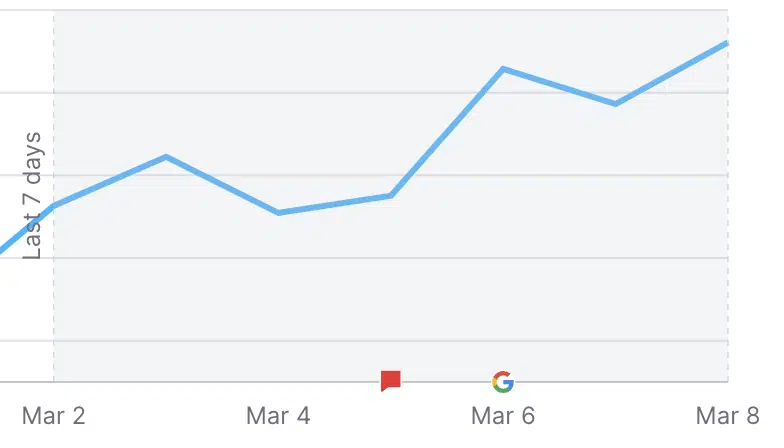
The red mark is the day the link was earned and is the site-wide visibility tracker in Semrush.
This client also seems to have done well with the Google update.
The ways to build links are wide and varied, but essentially, it is limited to:
- Earning through content/PR.
- Adding them to sites such as directories.
- Naturally, gaining them through brand marketing.
- Buying them through guest posts or inserts.
- Private blog networks (PBNs).
- Link exchanges.
- Sponsorships.
There are other ways, but you get the idea. There are only so many ways to do that.
And then comes the economics of backlink building.
It’s time-consuming, challenging and indeed full of disappointment.
For the SEO industry, this is not good at all.
And so, up popped link vendors – an entire multi-7-figure industry designed to tackle the link problem.
Link vending essentially replaced the need for agencies and site owners to build links, which is the hard part of SEO.
Google has been transparent on its views on link buying for some time:

But unless you live under the naive rock of SEO, you’ll know this isn’t what happens.
Take this DR 52 site selling guest post links for $40 a post:
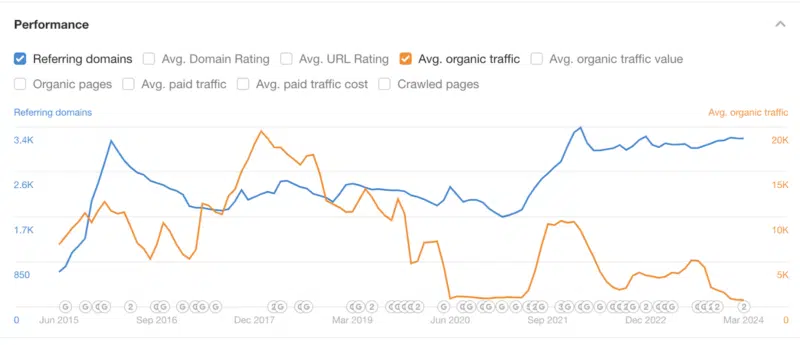
Or this DR 75 site selling guest posts for $75.
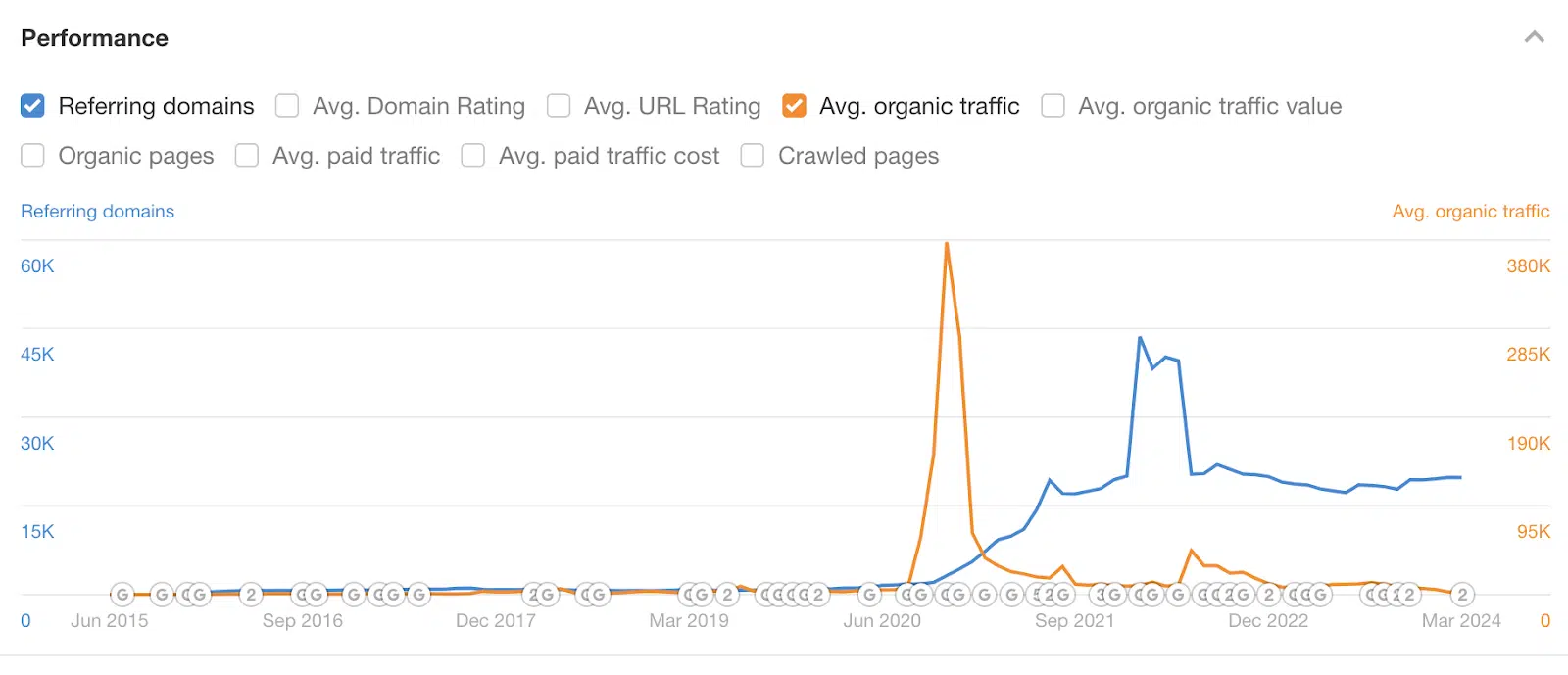
I could list hundreds of websites selling links. Like many in SEO, we get link lists all the time.
And that’s the modern state of link building.
Buy niche edits or guest post links at a fee, charge the agencies more money and then the agencies charge the clients.
This upward value chain has existed in the industry for as long as I can remember.
And it is a huge issue for Google. Because paid links manipulate search rankings and reward websites with rankings, they should not have gained.
But they have a solution.
Enter the Terminator of black hat SEO.
Enter SpamBrain: The nemesis of black hat SEO
SpamBrain was launched in 2018 to deal with the ongoing issues of spam on the web.
But aside from that, Google has been tight-lipped about the AI tool’s capabilities.
However, it was so powerful that in 2018, it reduced spam by staggering levels.

That was 2018 and SEOs need to realize that SpamBrain is a machine-learning platform that will only get stronger.
And we saw SpamBrain flex its muscles again in 2022 with Google’s link spam update.

As links were devalued, many sites went from having Page 1 rankings site-wide, to being on Page 2.
Personally, I consulted with brands that were left scratching their heads.
The reason was that Google launched their helpful content update at the same time and this has led to SEOs blaming content writers and content writers blaming links.
We have ended up with a serious issue in the industry.
But it’s a situation of the industry’s own making.
March 2024 core and spam updates = The apocalypse update?
As I’m writing this, an SEO has just reached out.
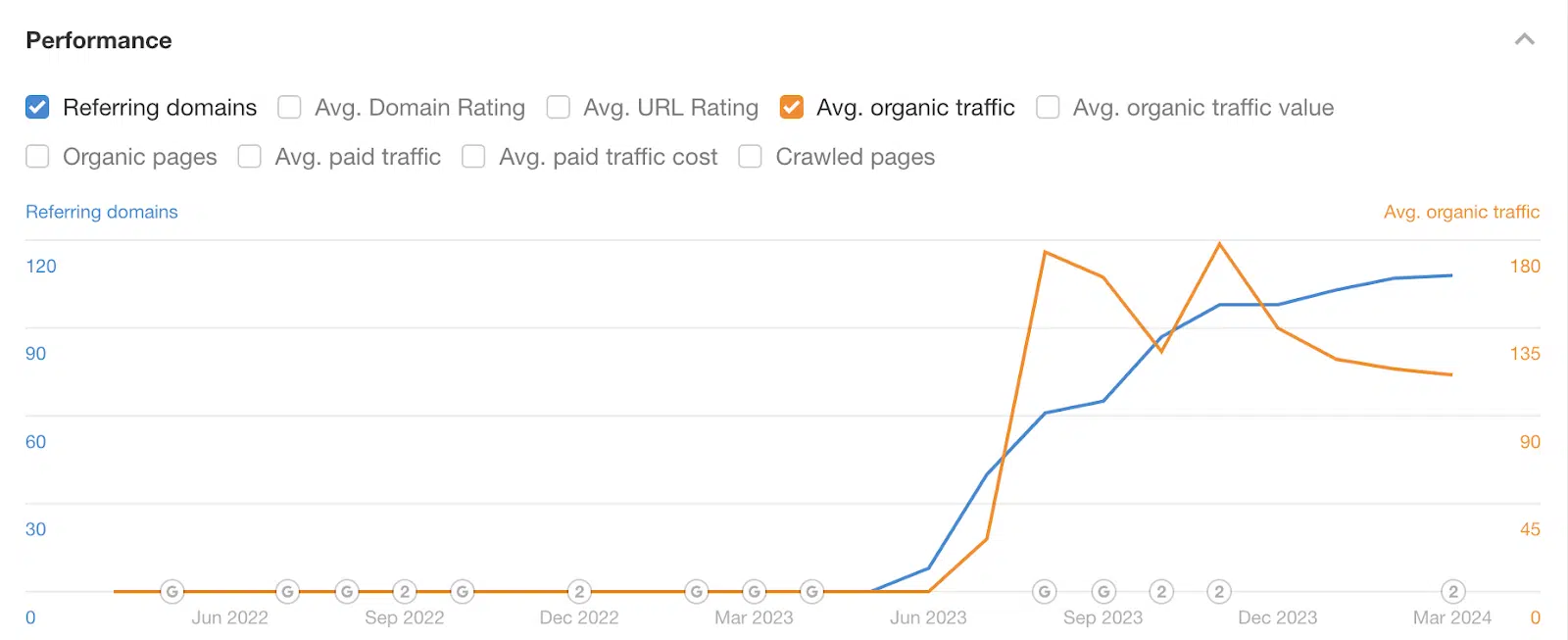
Their client’s site has been wiped from the rankings.
It’s not de-indexed, just all rankings are gone.
They have been buying links.
But how is SpamBrain doing this? How about we ask Gemini (known for telling a few pork pies)?
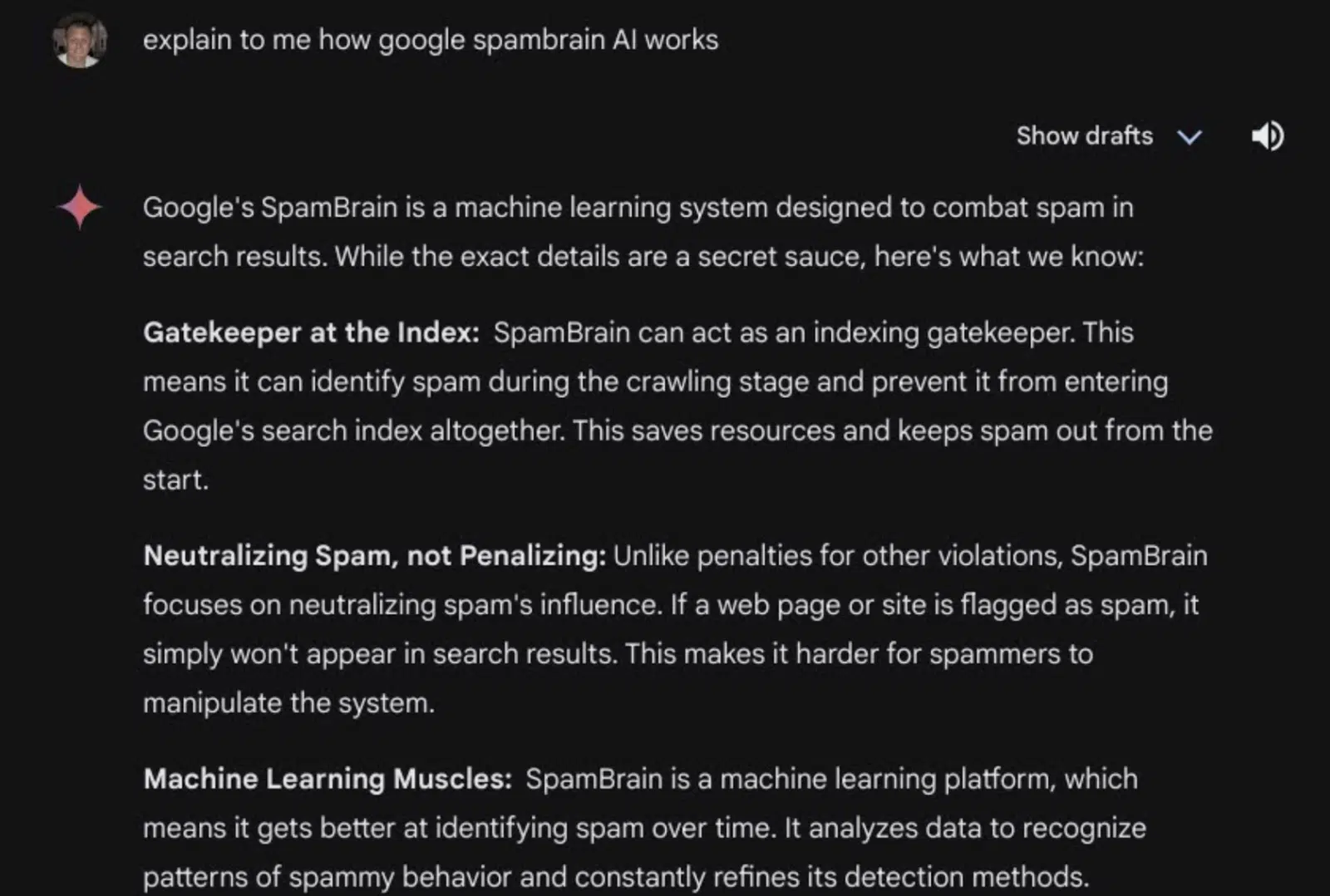
There are a number of articles, discussions and opinions online that SpamBrain has been working hard to identify spam behavior in search consoles.
Its primary purpose was to detect spam that could lead to fraud.
The link spam side has only been a recent addition.
What gets interesting is how Gemini describes how SpamBrains works to detect unnatural links:
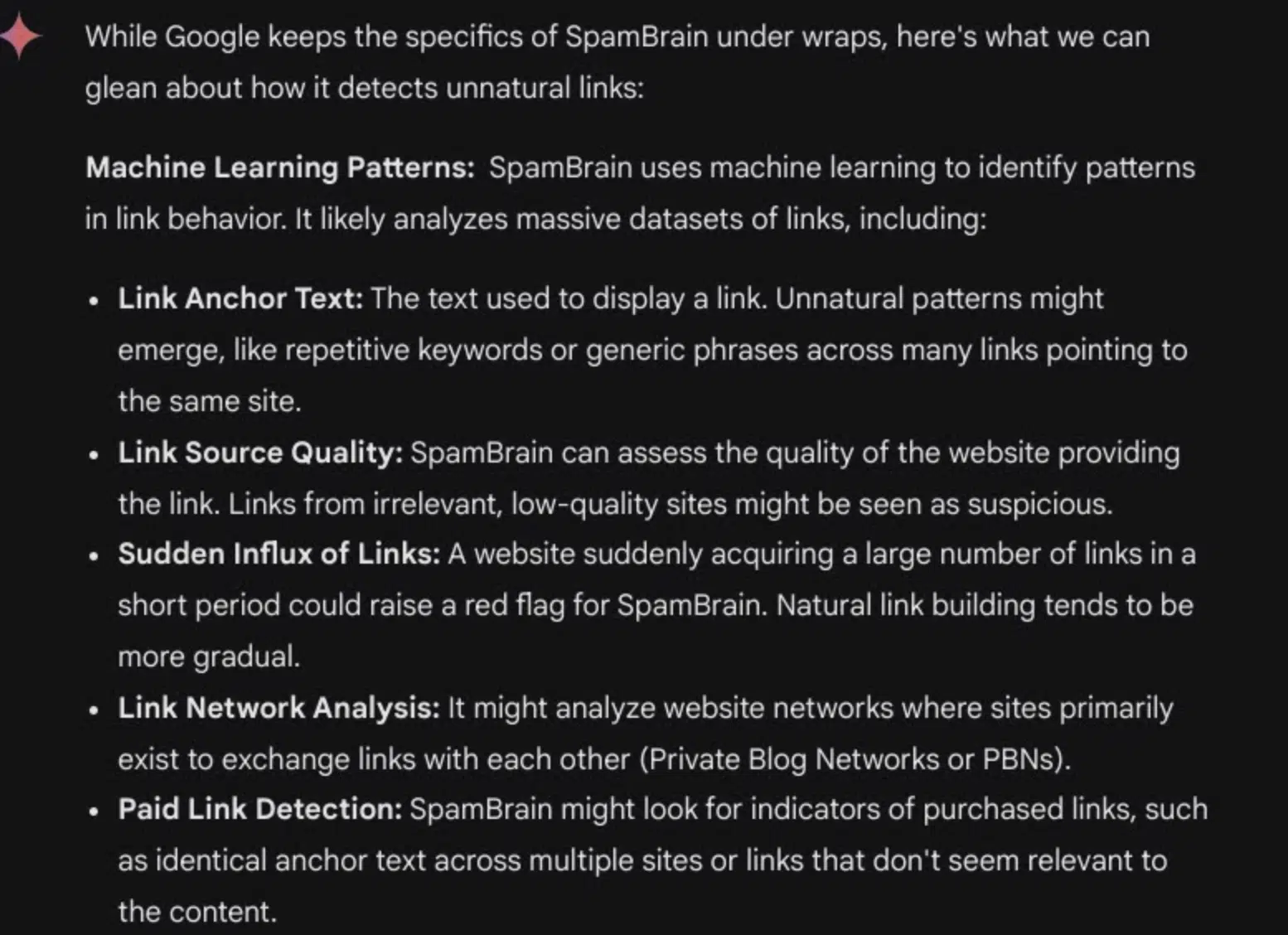
If all of the above is true, you can see why the March “Apocalypse update” is so powerful.
Repetitive anchor text, low-quality link source, sudden influx of links, link network analysis, irrelevant content to the links.
This is how humans can tell whether a link is paid or good vs. bad.
Except this is machine learning. It never sleeps, it never rests, it never gives up.
Is this the end of black hat SEO?
If you follow me on Linkedin, you’ll know I’ve said the same thing for years.
Stop. Buying. Links.
And while it’s true that the latest update is based on a range of things, site reputation abuse is one of them.
SEOs have jumped to assume that this update targets that emerging phrase called Parasite SEO. The act of trying to manipulate the rankings through publishing on a third-party site.
Yes, this is part of it, but equally, so is the content on sites and their link networks.
We know that guest blog sites are now dialing it in with AI. Add this to already junk content, and you have millions of websites that purely exist to manipulate search.
And here comes the kicker – SpamBrain has access to every Search Console.
It knows each and every site you have, and yes, it can quickly take them all down and devalue them.
This means we could see the end of the black hat SEO era.
Unchecked AI content and scale, plus link selling via guest post will be gone.
So what does the future look like?
Link costs just blew up
In a world with fewer ways to gain links, the value of the links just goes through the roof. That’s simple market economics.
It also means that white hat link building will be back in fashion.
I work for a digital PR and SEO agency. I see each day how a few quality media links earned can skyrocket rankings.
The issue? They are getting harder to get.
Less journalists and more spam emails mean that you have to have the best story to stand out.
Digital PR will likely increase in price and value in this era.
Google has come out and said that digital PR is not spam.
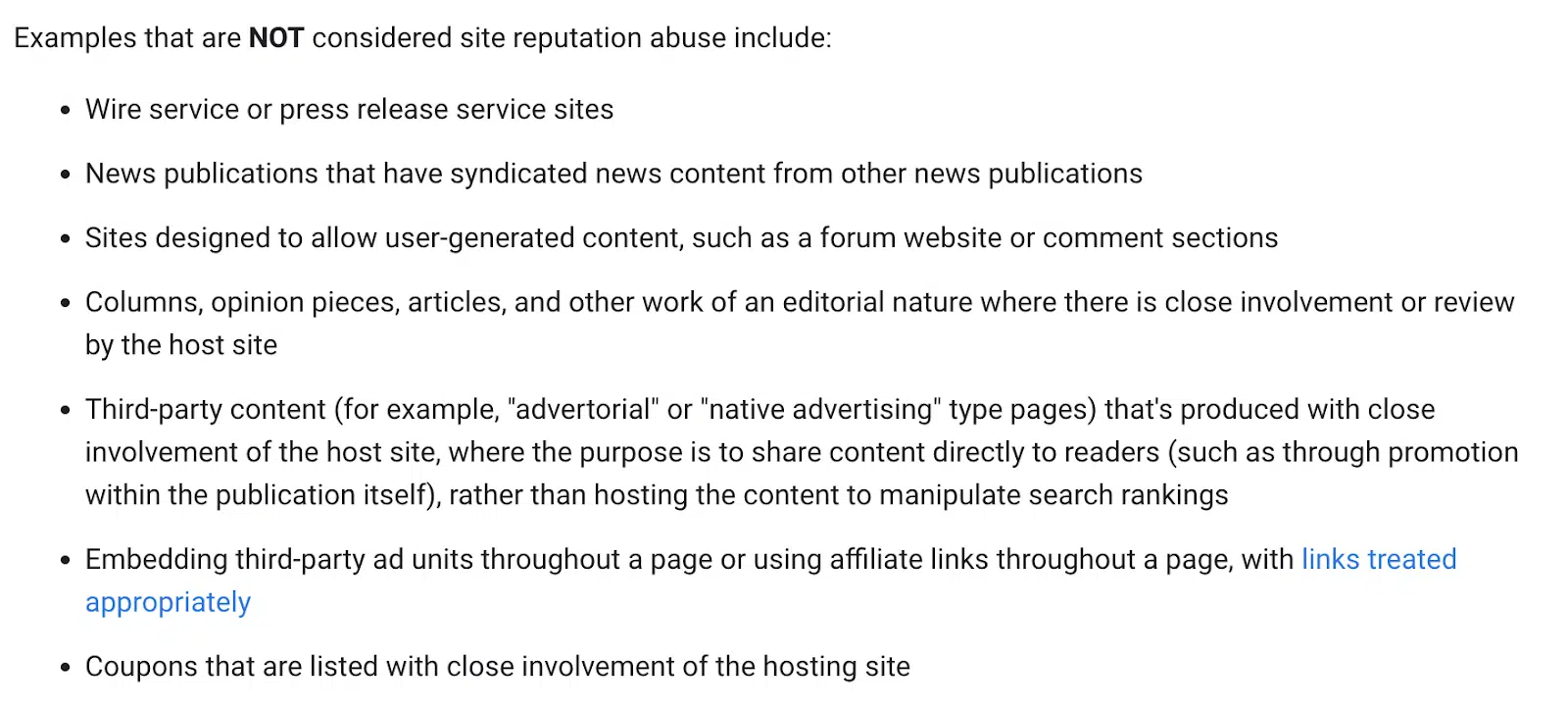
Editorial content, syndicated content from news sites, press releases and editorial content where there is close review by the host site is fine. And this is what you should focus on.
If SpamBrain can devalue your links, this will lead to a loss of rankings.
So you just can’t afford to buy links any longer. It’s a recipe for long-term disaster.
SpamBrain will only get stronger, and black hat SEOs should be sleeping with one eye open on their analytics.
Because just when you think you’re beating Google, it is really beating you.
